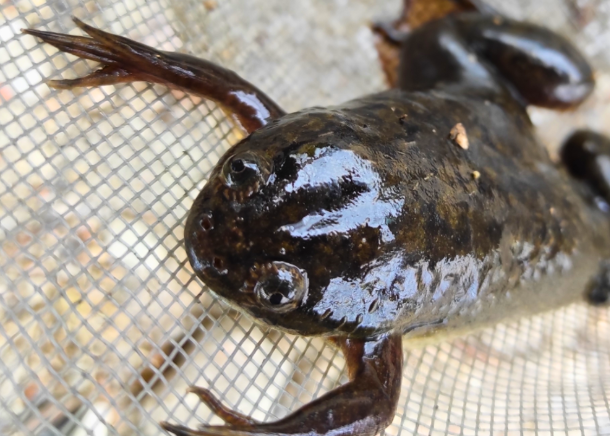Xenopus laevis is an amphibian with morphological adaptations that allow it to live in all types of freshwater bodies, including artificial ones, even in semi-urban areas. The species originates from the sub-Saharan region of Africa, and is currently invasive on four continents. The invasive nature of X. laevis populations has already been demonstrated: there are direct impacts, resulting from predation, and indirect impacts, such as increased water turbidity, which alter the dynamics of aquatic ecosystems. Another relevant impact arises from the fact that X. laevis is an asymptomatic vector of chytridiomycosis and several strains of Ranavirus, fatal to many anuran species.
In Portugal, the occurrence of the species in nature was reported for the first time between 2006 and 2008, in two streams in the municipality of Oeiras. The “Xenopus laevis control and eradication plan in the riverbanks of the municipality of Oeiras” was then defined, which has been running since 2010, with the signing of a collaboration protocol between the Governmental Institute for Conservation of Nature and Forests, the Municipality of Oeiras, CE3C/FCUL and Gulbenkian Science Institute, with the recent addition of Sintra Municipality.




